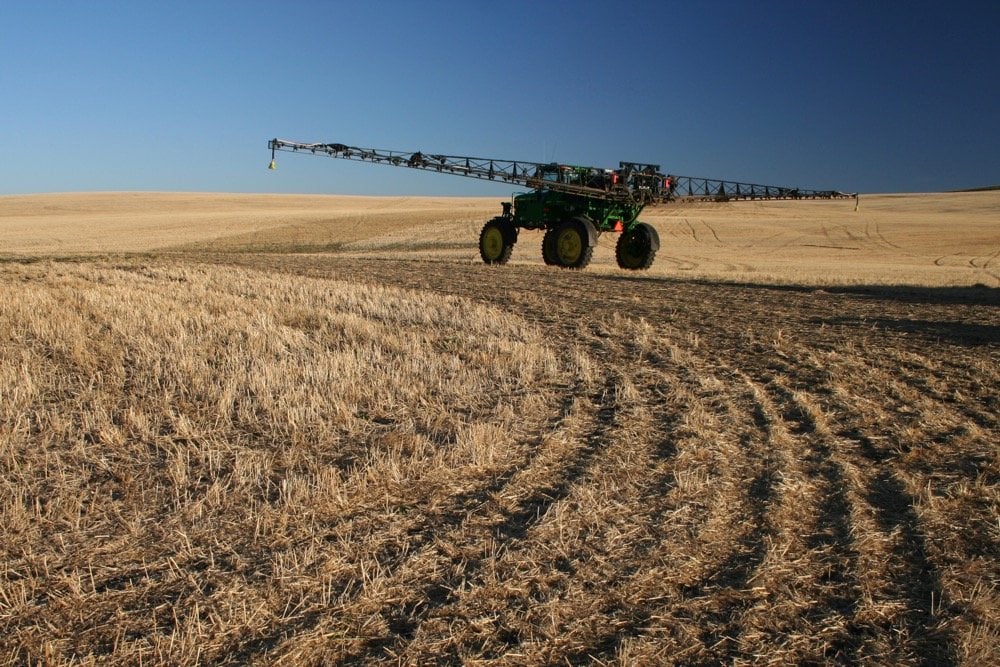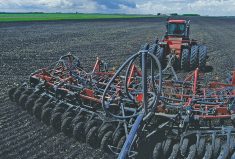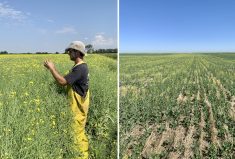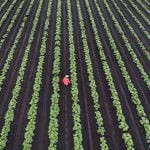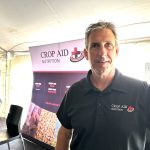Clint Jurke had never, not once, tested the quality of his sprayer water until a colleague said it would make a good topic for an article.
“I like to think I’m pretty good at agronomy,” said Jurke, agronomy director for the Canola Council of Canada and farmer from Lloydminster, Sask. “I scout, follow labels’ rates, set targets. I’m such a nerd that I test drinking water from my well annually. But have I ever tested the water we use in the sprayer? Even just once? Nope.”
Although his weed control has seemingly done the job, he humoured his colleague anyway, and sent a sample from the local municipal well that he taps for his spray tank.
Read Also
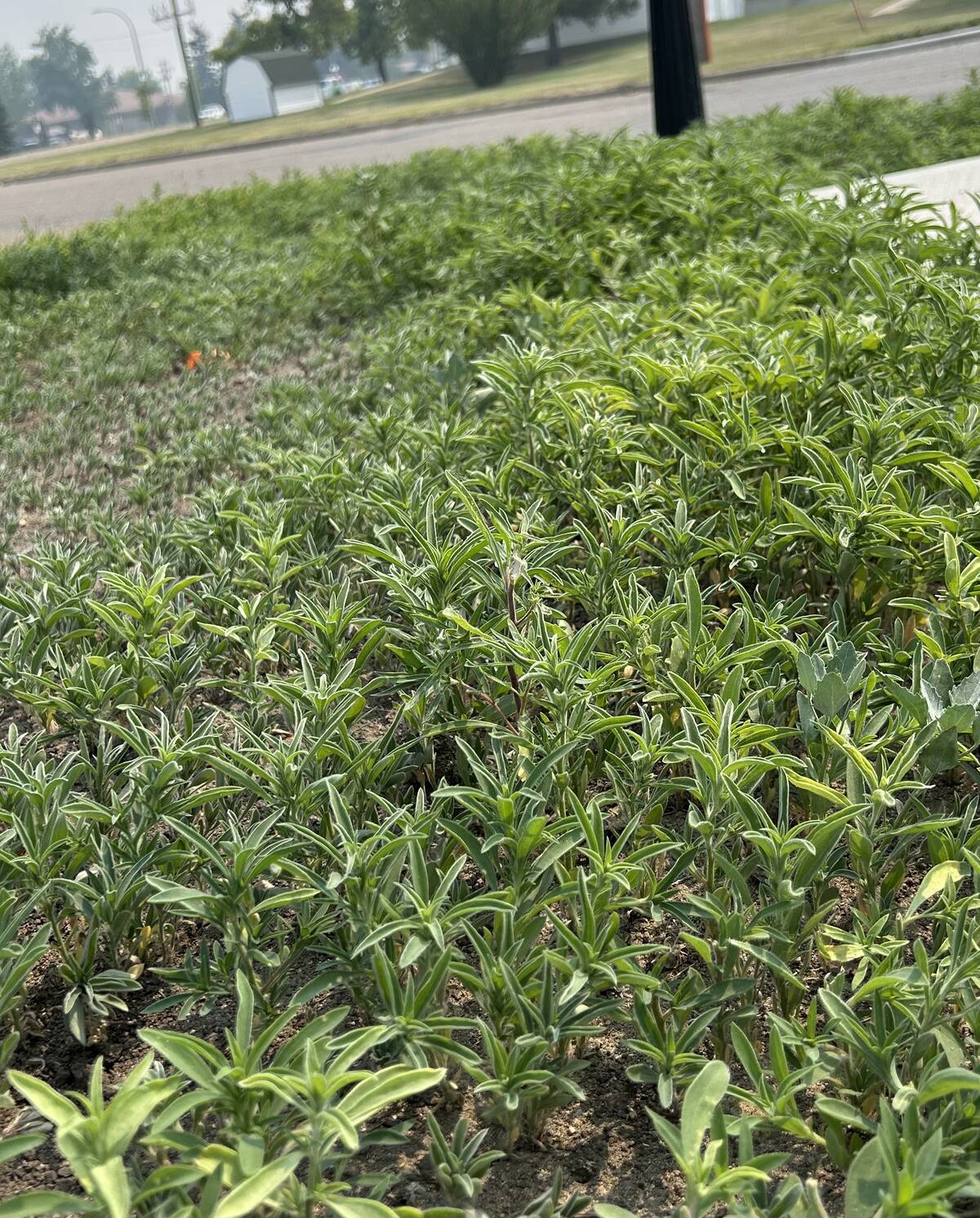
Kochia spreading unexpectedly in Alberta
Kochia is spreading through Alberta faster and further than ever expected. But how can farmers best manage the invasive weed?
As it turns out, his water is overrun with cations.
Feral cations to watch for in sprayer water include calcium, magnesium and sodium, as well as iron and potassium. These positively-charged ions bond with negatively-charged herbicide molecules, making the latter molecules useless for weed control. The more cations, the more herbicide molecules lost.
“The most sensitive chemical is glyphosate,” said sprayer specialist Tom Wolf, owner of Agrimetrix Research & Training in Saskatoon.
Cations can also affect Group 10 glufosinate as well as Group 1 (“-dim”) chemistries, Group 4 (2,4-D amine) and Group 27 products.
WinField United has conducted thousands of water quality tests across the Prairies. Martin Carr, the company’s agronomy manager for Western Canada, said the Prairies, in general, have a problem with water hardness. Hard water is high in the cations calcium and magnesium.
Water conductivity, as shown on test results, is a general indicator of salt content, including the cation sodium. High-conductivity water is especially common in east-central Alberta and west-central Saskatchewan, according to Carr.
Chemistry class in session
Using the example of calcium and glyphosate, calcium has a plus-two charge, while glyphosate has a negative-one charge. Thus, every calcium cation in hard water can bond with two glyphosate molecules. This creates a new molecule called calcium glyphosate.
“Calcium glyphosate is essentially a rock,” Carr said. “Plants can’t take it in. Plants can’t eat rocks.”
Jurke’s water test showed overall conductivity of 2,246 microSiemens per centimetre (µS/cm) and hardness of 778 milligrams per litre of calcium carbonate equivalent. Both results are high. Water with conductivity over 500 µS/cm could start to affect herbicide performance.
“If conductivity is below 500 µS/cm, the water is probably good for spraying. If the value is around 1,000 to 2,000, further investigation is necessary,” Wolf wrote in his article, “How to interpret a water quality test result,” published on sprayers101.com.
As for hardness, Carr says that “once you’re in that 150 to 300 ppm (parts per million) range, that’s when we start to see tie-up with pesticides. The more you have, the worse it gets.”
Neuter the cations
Farmers could test water from a few local sources to find one with lower cations.
Well water is fairly consistent over time, but if wells close together tap into different water sources, their cation content can vary. Dugout water quality can vary wildly. After spring runoff, it can be clean, “especially if drawn out with a good filter and the operator doesn’t drag the pipe along the bottom stirring up cation-containing mud,” Carr said.
After a hot summer’s worth of evaporation, dugout cations are more concentrated.
“The best and worst water test results I’ve seen have been from dugouts,” Carr added.
High label rates of herbicide can reduce the effect of cations on weed control. Glyphosate at the low rate of 180 grams of active ingredient per acre could see a big drop in efficacy if sprayer water has high cation content.
“At the high rate of 360 grams per acre, farmers may see good response in the field even if half of the molecules are tied up,” Carr said. “However, adding higher and higher rates of glyphosate isn’t good stewardship with regard to resistance.”
He’d rather see farmers focus on multiple modes of action working together to kill a weed and look at the common recommendation to treat water — ammonium sulphate.
It dissolves in water to form ammonium and sulphate. The negatively-charged sulphate ions bond with the cations so they can’t interact with the herbicide molecules. The positively-charged ammonium ions bond with glyphosate to create ammonium-glyphosate, an effective herbicide.
“Plants pull it in thinking they’re getting a shot of ammonium, so there is no reduction in control,” Carr said.
There’s an exception, however, with 2,4-D amine. When spraying it with hard water, materials published by the Saskatchewan government recommend a non-ionic surfactant (such as Agral 90, AgSurf or Companion) at a rate of one litre of surfactant per 1,000 litres of water. The same material says ammonium sulphate has not been shown to work for 2,4-D amine.
Treatment
Mixing order is critical when adding conditioner to treat sprayer water. The conditioner goes in first to tie up the cations. The herbicide follows.
WinField United tests so much water because it sells a lot of water conditioner, Carr acknowledged. It has a proprietary ammonium sulphate product called Crimson NG.
Any input supplier will often have ammonium sulphate in stock.
Agriculture labs that test sprayer water will recommend how much ammonium sulphate to add to counteract cation content. If farms already have water test results from a provincial lab, private agriculture labs can provide conditioner recommendations based on those results.
Carr ran Jurke’s water analysis through the WinField United calculator, which has an “antagonism coefficient” for each cation. It recommended that Jurke add 4.55 litres of ammonium sulphate (34 per cent solution) per 100 U.S. gallons of sprayer water.
If spraying in dusty conditions, Carr would add another 2.83 litres per 100 gallons (0.75 per cent volume per volume) to counter any weed control loss on the foliar level. Dust on leaf surfaces will also have cations, which can tie up glyphosate molecules before they enter the leaf.
“Often, right behind sprayer, where the sprayer kicks up more dust, you’ll find less-dead weeds,” Carr said.
With the extra volume for dusty conditions, the total recommendation is 7.38 litres of ammonium sulphate per 100 gallons, or nine 10-litre jugs for a 1,200-gallon sprayer tank. Using Crimson NG’s suggested retail price, the cost to condition each tank would come out to about $441.
Other options
Other methods to reduce the effect of high-cation water include lower water volumes, urea ammonium nitrate and acidifiers. None of these is as good as switching water sources or adding ammonium sulphate.
Lower water volume reduces the ratio of water cations to glyphosate molecules, but Carr doesn’t recommend this.
“Days of spraying straight glyphosate are probably over, with glyphosate resistance becoming more and more of a problem. Cutting water volume is not considered acceptable for the tank mix partners,” he said.
Most herbicides need coverage to work properly. With lower water volumes, the tank mix is less effective.
Urea ammonium nitrate (UAN) supplies ammonium that can bind with glyphosate to maintain performance, but it doesn’t contain the sulphate that bonds with the cations.
Acidifiers to lower water pH neutralizes the herbicide charge, making them less likely to bond with cations, but this comes at a risk.
“Certain herbicides commonly tank mixed with glyphosate can fall out of solution and at times plug a sprayer if the pH gets too low,” Carr warned.
Jurke opted for ammonium sulphate after receiving his water results, although perhaps not in every tank until he sees clear benefits. He’ll likely start in fields with kochia.
“It would be great if conditioners would help with kochia control,” he said.
They might. Sub-lethal herbicide performance can be a factor in selecting for higher and higher levels of glyphosate resistance in kochia. However, water conditioners can’t fix glyphosate results if the kochia is already resistant.
Jay Whetter is a communications manager with the Canola Council of Canada.

